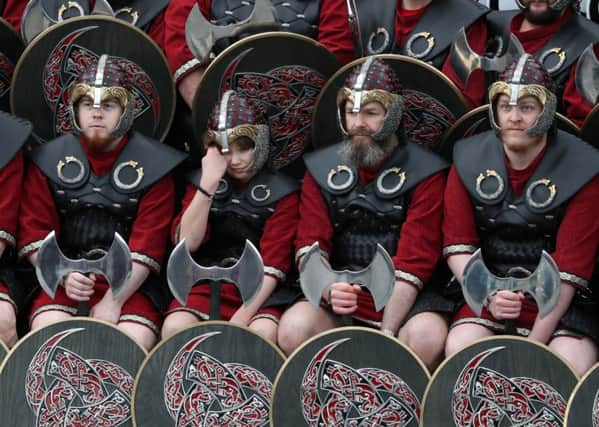Why Shetland’s Up Helly should ditch ban on women – leader comment


Last year was a historic one for Scotland as, after years of sometimes bitter disputes, women took part in Hawick Common Riding for the first time and Muirfield Golf Club, home of the Honourable Company of Edinburgh Golfers, finally admitted its first-ever women members.
It is shameful that it took so long for half the population to be accepted as equals in this way and that attitudes left over from the days when women were denied the vote managed to persist for so long. And yet still they persist.
Advertisement
Hide AdAdvertisement
Hide AdThe main event of Up Helly Aa is a wonderful, torch-lit parade through the streets of Lerwick in Shetland that celebrates the islands’ Viking heritage. But, dating back to 1820, this is an all-male affair.
So what, some might say, insisting Viking warriors were men. But surely, even if this were true, we can choose to move on and celebrate Vikings in a way that includes everyone.
And there are stories of Viking ‘shield maidens’, women who did go into battle, that date back to the early Middle Ages.
Some have dismissed these accounts as little more than myths but, recently, scientific evidence has emerged that supports them. In 2017, the remains of a body in a warrior grave in the Viking Age town of Birka in Sweden were identified as female using genetic techniques. The grave goods included a sword, an axe, armour-piercing arrows and two shields.
And in December, archaeologists excavating a 2,500-year-old tomb reported they had found four women buried together with weapons, horse-riding equipment and other items associated with warriors in a Scythian burial site in the Russian village of Devitsa. These were, it has been suggested, the real-life ‘Amazons’ described by the ancient Greeks. About a third of Scythian women’s remains have reportedly been found with weapons and some had war wounds.
So it seems fairly clear that women in some societies did go into battle and the idea they should not is a later cultural invention, one so strong that, for some, it still makes the idea appear ridiculous.
The modern British Army has learned to value women in the military and so, it seems, did other past cultures. After campaign group Reclaim the Raven pinned a proclamation to the Mercat Cross in Lerwick asking “where are your dottirs?”, surely it is time for the organisers of Up Helly Aa to admit women to their warriors ranks.